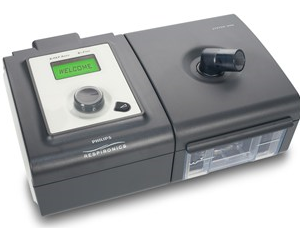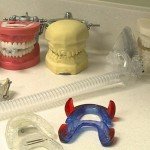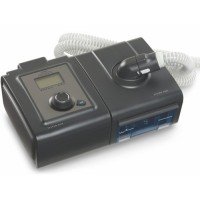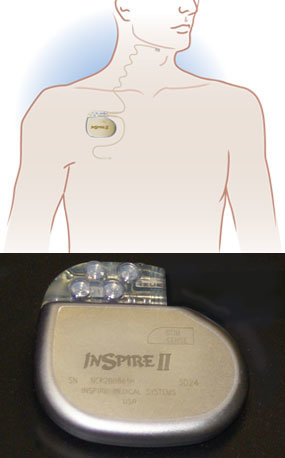How to Prove Sleep Apnea Is Service Connected
For those diagnosed with obstructive sleep apnea, there are several treatment options available from which to chose. Here, we will discuss the most popular treatment options available. These options include CPAP, sleep apnea dental devices, weight loss, and sleep apnea surgery. We will also explore some of the newer treatment options for sleep apnea that are less well known.
Sleep apnea is a medical condition that involves brief pauses in breathing while you are sleeping. Although the pauses usually only last a few seconds, the condition can have several adverse effects on the body.
There are a few different types of sleep apnea with obstructive sleep apnea being the most common. Obstructive sleep apnea occurs when the airway becomes blocked. The blockage can develop if the muscles in the back of the throat or the soft fatty tissues relax during sleep.
If you have sleep apnea, the pauses in breathing disrupt how deep you sleep. Your quality of sleep is diminished, which can often lead to daytime fatigue and sleepiness. But that's not all. Sleep apnea is associated with an increased risk of certain medical conditions. According to the National Heart, Lung and Blood Institute, people with sleep apnea have an increased risk of a stroke, heart attack and diabetes.
It's pretty clear, if you have sleep apnea, you should get treatment. The good news is in most cases, sleep apnea can be successfully treated so that you can be on your way to a better night's rest. Consider some of the following treatment options:
Sleep Apnea Treatment Options
CPAP
One of the main treatment options for obstructive sleep apnea is CPAP, which stands for continuous positive airway pressure. Although that might sound confusing, it's actually pretty simple. A small CPAP machine delivers a continuous stream of pressurized air to your airways as you inhale. The pressure helps keep your airway passages open while you sleep. Because your airway remains open, it prevents pauses in breathing.

A CPAP machine is small and can fit on a nightstand next to your bed. The machine connects to flexible tubing and a mask you'll wear at bedtime. There are different types of masks including one that covers your nose and one that covers both your nose and mouth. You may also use a nasal pillow, which fits into your nose.
CPAP for home use is usually quiet and comfortable to use. CPAP and BiPAP often improves sleep quality and decreases snoring, which may also be appreciated by your bedmate.
Dental Appliances
In some cases, a dental appliance may be effective in treating mild to moderate sleep apnea. There are two main types of dental appliances for sleep apnea including a mandibular advancement device and a tongue retaining device.

A mandibular advancement device (MADs) is worn similar to a sports mouth guard. But it's worn only while you sleep. The device works by pushing the jaw forward to keep the upper airway open. A tongue retaining device is also a mouthpiece, but it has a small piece that fits around the tongue. The device holds the tongue forward and prevents it from blocking the airway.
If your sleep specialist prescribes a dental device, your dentist will use physical or digital impressions of your mouth to custom fit the device. The impressions of your teeth are sent to a dental lab, and the appliance is made. Once your appliance is made, you'll visit your dentist to make sure it fits properly and is comfortable to wear. A dental appliance is easy to use, and since there is less equipment involved than a CPAP, it's easy to travel with.
Sleep Apnea Surgery
In some instances, surgery for sleep apnea may be a treatment option if CPAP or other treatments are ineffective or not tolerated. The type of surgical procedure may vary based on a person's individual anatomy and problems contributing to sleep apnea.
Possible procedures include surgery on the nose to correct a deviated septum or remove polyps. Enlarged tonsils and adenoids can also lead to sleep apnea and may be treated through surgery. There are also surgical options that involve advancing the base of the tongue forward to prevent it from blocking the airway. If you're considering surgery for sleep apnea, it's important to discuss the risks versus the benefits with your doctor before making a decision.
Weight Loss

Weight loss remains an effective treatment option for overweight patients with sleep apnea. For many, it will improve sleep breathing.
Sources
American Academy of Otolaryngology-Head and Neck Surgery. Continuous Positive Airway Pressure. http://www.entnet.org/content/continuous-positive-airway-pressure-cpap Retrieved October 2016
National Heart, Lung and Blood Institute. What is Sleep Apnea. http://www.nhlbi.nih.gov/health/health-topics/topics/sleepapnea Retrieved October 2016.
Sleep Apnea Devices
There are many sleep apnea devices that are used for the treatment of obstructive sleep apnea. These sleep apnea devices utilize different technologies in order to solve the problem of airway closure during sleep. Each sleep apnea device approaches airway closure from a different angle. Therapy for sleep apnea is a very personal decision that should be made with the assistance of a physician or professional sleep clinician. In this section, we will discuss some of the sleep apnea devices that are available, or will soon be available, on the market.
In general, the sleep apnea devices that available for the treatment of sleep apnea work by keeping upper airway open – and preventing it from closing during sleep.
Some sleep apnea devices use anatomic positioning. Others use air pressure. Newer technologies are utilizing electrical impulses.
Sleep Apnea Oral Appliances
These are dental devices which look very much like mouth guards. They are worn at night. They open the mouth by bringing the mandible forward. They are also called mandibular advancing devices (MAD) and mandibular repositioning devices (MRD), as they reposition the mandible forward relative to the maxilla (the upper jaw). There are several Sleep Apnea Oral Appliances that are FDA approved. Some are made of soft nylon plastic, others are made from a resin-like material. A few use computer aided design (CAD) and 3D imaging to fit the device to the mouth and teeth. They essentially work as an airway splint.

CPAP
Continuous Positive Airway Pressure has been around for a few decades. It is one of the most popular therapies available for sleep apnea. It works by delivering room air through a mask in the nose and/or mouth to keep the airway open – like an 'air splint'. It is considered very safe with few side effects. However, many experience challenges getting accommodated to the treatment. There are several technical advances that are added to standard CPAP. Many of these technologies are aimed at increasing comfort. There are 100's of CPAP masks and CPAPs and CPAP supplies that are on the market.

Alternative Sleep Apnea Treatment Devices
While the following options are novel and exciting approaches to the treatment of OSA, they are relatively new. There is less research and data looking at these sleep apnea devices.
Inspire – Inspire Medical device uses an electrical impulse to stimulate the muscles around the airway. During sleep, in patients that have sleep apnea, these muscles collapse, closing the airway. This device which resembles a pacemaker, is surgically implanted to keep the airway open during sleep.

Body Positioning Devices – are devices that encourage the individual with sleep apnea to avoid the supine position. For patients with mild sleep apnea, this may be beneficial. Originally, some inserted a tennis ball into the back of a shirt, which would cause the patient to shift to a side position. New digital devices are aimed at treating positional obstructive sleep apnea.
Negative intra-oral pressure devices – new devices are being studied which apply negative airway pressure on parts of the soft palate – at the roof of the mouth. This reportedly prevents the soft tissues of the airway from collapsing.
Tongue Retaining Devices (TRD)– A plastic mouthpiece that sucks the tongue into a forward position. This makes more room in the back of the throat allowing for a larger posterior airway area.
Pillar Procedure –Pillar is a minimally invasive device meant for the treatment of OSA and snoring. It is done by a minor surgery which is non-destructive in nature and involves surgical placement of small rods of polyester in the soft palate of sufferer. After a week or so the respective tissue heals and it makes the soft palate stiff as compared to previous.
The study of 45,000 cases including two meta-analysis proved that there is no risk of rejection, extrusion or infection in case of this treatment- of which many people are afraid of.
In summary, there are many sleep apnea treatment options available. Each OSA therapy has advantages and disadvantages over the others. You should discuss these sleep apnea treatment options with your doctor to find the right option for you.
- Author
- Recent Posts
Board-certified sleep M.D. physicians, scientists, editors and writers for ASA.
How to Prove Sleep Apnea Is Service Connected
Source: https://www.sleepassociation.org/sleep-apnea/popular-sleep-apnea-treatments/